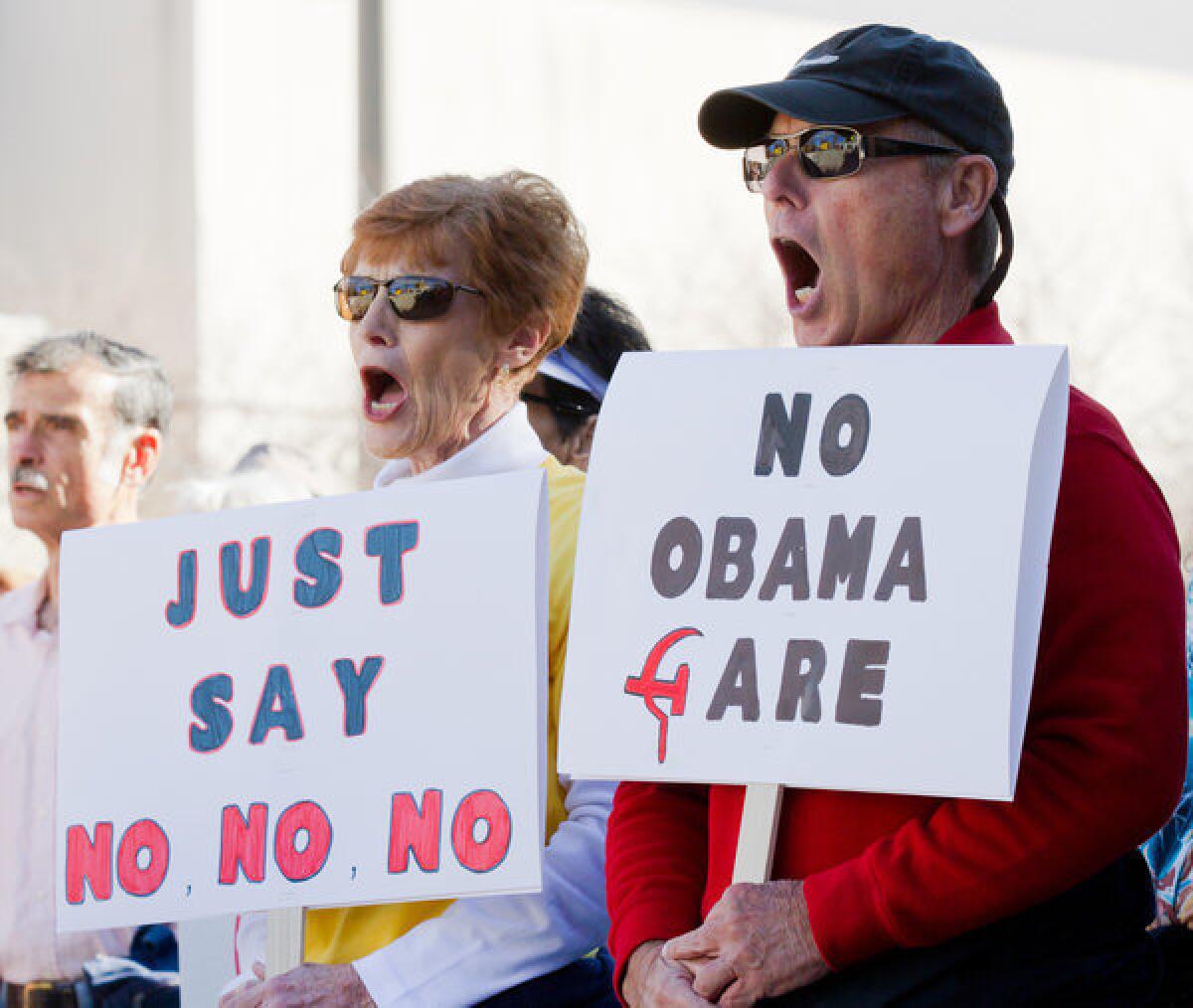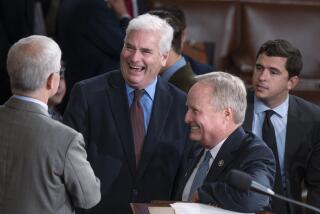Tea party isn’t dead by any means

- Share via
WASHINGTON -- Liberals were dancing on what they saw as the tea party’s grave after Jim DeMint, one of its champions, decided to quit the Senate and take the Heritage Foundation’s top job. But although 2012 has been, at best, a mixed bag for the tea party, the movement isn’t dead.
The first test of its vitality comes as Washington tries to deal with the nation’s short- and long-term budget and debt crises, issues that top the tea-party agenda.
Anti-tax hardliner Grover Norquist predicts a tea-party revival if the U.S. goes over the so-called fiscal cliff this month, which would happen if President Obama and Congress can’t reach agreement by Dec. 31 on how to avert the mandated tax increases and across-the-board spending cuts. Polls show that most Americans would blame Republicans more than the president -- but most of those voters don’t live in House Republican districts.
“I don’t see any dilution in the enthusiasm and determination” of tea-party supporters around the country, said Sal Russo, a veteran California political consultant and chief strategist of Tea Party Express. In Washington, “the tea party is probably stronger in the House today than it was before.”
PHOTOS: The best shots from the 2012 campaign
The vast majority of House Republicans have little incentive to favor compromise with Democrats, at least in terms of their own survival. Only six (out of 234 in the new House) will represent districts where the electorate leans Democratic, according to David Wasserman of the Cook Political Report.
“These numbers are daunting,” Wassermann wrote. “In other words, the overwhelming share of House Republicans will have more to fear from a 2014 primary than a 2014 general election. This political reality drives congressional behavior.”
The 2014 elections pose a second challenge for tea-partiers. Will they be able to hold or even increase their clout in the House and Senate? History says that midterm elections in a second presidential term favor the party out of power in the White House. But if current economic trends continue, the financial pressures that fueled the tea-party uprisings of 2010 will have ebbed, potentially making it much tougher for staunch tea-party conservatives in multi-candidate primaries.
Third will be the 2016 presidential election. Some of the most prominent possibilities have tea-party pedigrees, including Sens. Marco Rubio of Florida and Rand Paul of Kentucky, both of whom rose to power in 2010 after overcoming the party establishment in GOP primaries.
Both men are evolving, in tone and possibly substance. Paul has talked about an “eventual” path to citizenship for undocumented immigrants, and Rubio gave a much-praised speech at a conservative dinner in Washington.
To the extent that they, and others, edge away from the tea-party base, space could open up for a purist tea-party contender. DeMint hasn’t ruled out a 2016 run. And though at least one person close to him played down that possibility on the day he announced his resignation, Republicans in the earliest presidential states didn’t dismiss the idea out of hand.
Iowa’s Republican National Committeeman, Steve Scheffler, said that if DeMint were to run for president, “he’d have some support out here.” Added the social-conservative activist: “He certainly would be high on my list.”
“I think the Heritage Foundation can give him a better platform than being a minority member of the Senate,” said Mike Dennehy, a GOP strategist in New Hampshire. “But this is all predicated on how and where he takes Heritage. I do think he has the potential of being a viable candidate to win the nomination.”
Follow Politics Now on Twitter and Facebook
twitter.com/@paulwestdc
More to Read
Get the L.A. Times Politics newsletter
Deeply reported insights into legislation, politics and policy from Sacramento, Washington and beyond. In your inbox twice per week.
You may occasionally receive promotional content from the Los Angeles Times.










